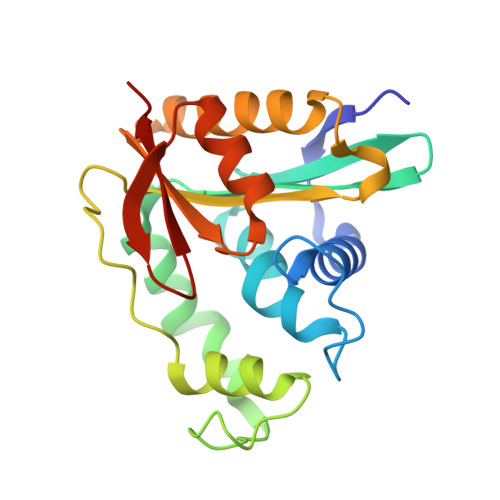Structure of a Bacterial Putative Acetyltransferase Defines the Fold of the Human O-Glcnacase C-Terminal Domain.
Rao, F.V., Schuttelkopf, A.W., Dorfmueller, H.C., Ferenbach, A.T., Navratilova, I., van Aalten, D.M.F.(2013) Open Biol 3: 30021
- PubMed: 24088714
- DOI: https://doi.org/10.1098/rsob.130021
- Primary Citation of Related Structures:
3ZJ0 - PubMed Abstract:
The dynamic modification of proteins by O-linked N-acetylglucosamine (O-GlcNAc) is an essential posttranslational modification present in higher eukaryotes. Removal of O-GlcNAc is catalysed by O-GlcNAcase, a multi-domain enzyme that has been reported to be bifunctional, possessing both glycoside hydrolase and histone acetyltransferase (AT) activity. Insights into the mechanism, protein substrate recognition and inhibition of the hydrolase domain of human OGA (hOGA) have been obtained via the use of the structures of bacterial homologues. However, the molecular basis of AT activity of OGA, which has only been reported in vitro, is not presently understood. Here, we describe the crystal structure of a putative acetyltransferase (OgpAT) that we identified in the genome of the marine bacterium Oceanicola granulosus, showing homology to the hOGA C-terminal AT domain (hOGA-AT). The structure of OgpAT in complex with acetyl coenzyme A (AcCoA) reveals that, by homology modelling, hOGA-AT adopts a variant AT fold with a unique loop creating a deep tunnel. The structures, together with mutagenesis and surface plasmon resonance data, reveal that while the bacterial OgpAT binds AcCoA, the hOGA-AT does not, as explained by the lack of key residues normally required to bind AcCoA. Thus, the C-terminal domain of hOGA is a catalytically incompetent 'pseudo'-AT.
Organizational Affiliation:
Division of Molecular Microbiology, University of Dundee, Dow Street, Dundee DD1 5EH, UK.

















